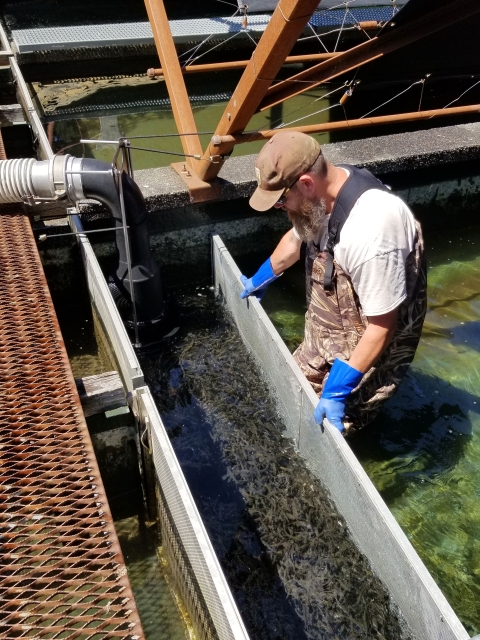What We Do
Established: 1951
Purpose & Authorizing Legislation: Willard National Fish Hatchery was authorized by an amendment to the Mitchell Act to mitigate for fisheries lost due to the construction and operation of hydroelectric dams on the Columbia River.
Funding: Funding is provided by the Mitchell Act, administered by NOAA Fisheries, and the Bonneville Power Administration.
Fish Produced: Willard produces 2 million fall Chinook salmon annually that are released into the Little White Salmon River. The hatchery also raises up to 1.2 million coho salmon annually in partnership with the Yakama Nation. These fish are transferred to various acclimation sites in north central Washington where they are released.
Hatchery Life Cycle
Spring: Coho smolts transferred to Mid-Columbia drainages for acclimation and release. Care for coho and up-river bright (URB) fall Chinook fry.
Summer: Sub-yearling URB fall Chinook and coho fry are tagged to provide information for the fishery. URB sub-yearlings are released in July. Care for coho.
Fall: Assist with spawning at complex hatcheries. Care for coho. Incubate and care for URB eggs at Carson Depot Springs (CDS) facility.
Winter: Receive and incubate eyed coho eggs from Yakama Nation and URB eggs. Transfer swim-up fry from CDS to Willard for early rearing. Care for coho pre-smolts.
Management and Conservation
The next time you go fishing, you might just catch a fish that was raised at Willard National Fish Hatchery. Since 1871, National Fish Hatcheries have been responding to conservation challenges affecting America’s fish and other aquatic species. Producing fish continues to be an irreplaceable tool in managing or restoring fisheries along with habitat conservation. In doing so, we help provide recreation opportunities to America’s 34 million anglers who spend $36 billion annually in pursuit of their favored pastime.

